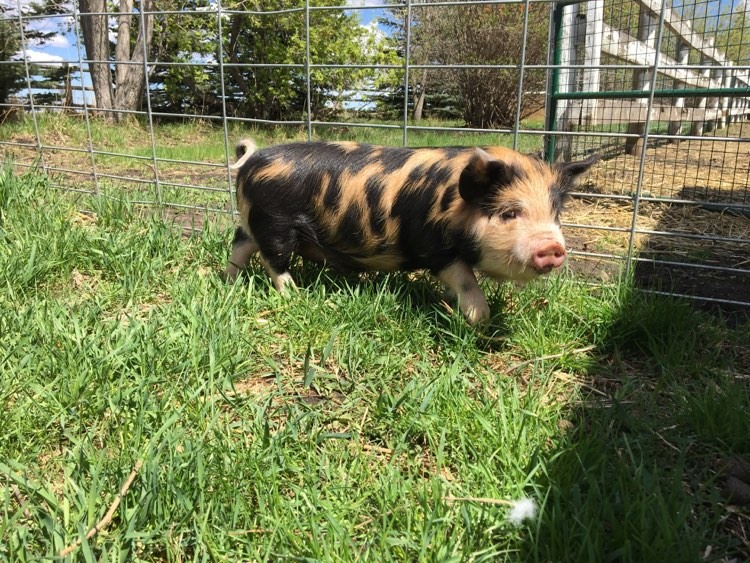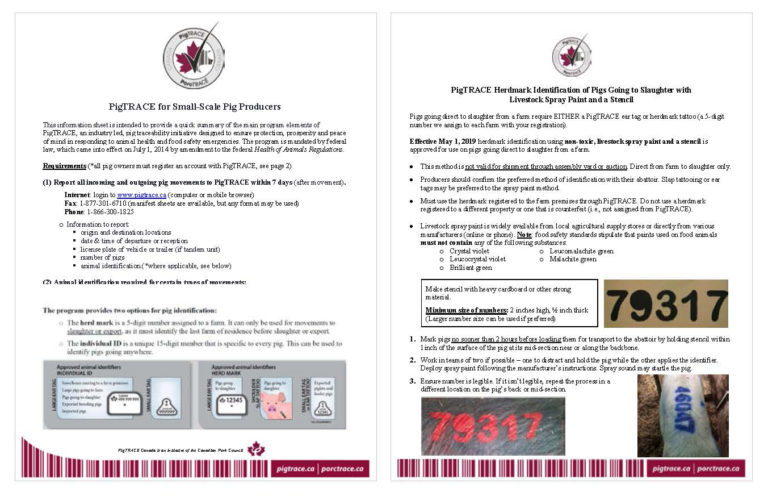There are a number of key points you should take into consideration before bringing your pigs home. While some provinces have specific rules and regulations around livestock and pigs, there a couple of items that are implemented Canada-wide.
- A provincial Premises Identification Number (PID) is required if you own a pig, regardless of numbers.
- If you possess a pig, you MUST register your location (farm) with PigTRACE.
- All pork producers must follow requirements set out in the Code of Practice for the Care and Handling of Pigs, as well as provincial animal care laws.
- Know what is required prior to shipping. Requirements are different when shipping to provincially or federally inspected slaughter plants.
- Environmental regulations cover water, manure and deadstock management, and vary by province
- Your provincial pork organization can help you through in locating and registering for various programs.
Premise Registration
The Premises Identification (PID) system is an integral part of Canada’s traceability system, linking livestock and poultry to geographic locations. This is critical in PREPARATION for, RESPONSE to, and RECOVERY from animal health issues and emergencies. A premises identification number is required if you possess any number of pigs. Registering your premise enables the provincial government to contact you in the event of an animal disease crisis or a natural disaster that might impact your farm.
What is premises identification
The identification of premises consists of providing information about a specific location (that is contact information, location, type of agricultural and agri-food operation on the site, and animal species kept). Once the information has been received and validated by the provincial or territorial government where the premises is located, a unique identification number is provided for this specific location. This premises identification number is then used when reporting the receipt or departure of animals from this premises
Need help?
More information on premise identification can be found at premise identification.
- British Columbia Premises Identification Program
- Alberta Premises Identification Program
- Saskatchewan Premises Identification
- Manitoba Premises Identification Program
- Ontario Premises Registry Initiative
- Quebec Premises Identification Portal
- Nova Scotia Premises Identification
- New Brunswick Premises Identification
- Prince Edward Island Livestock and Poultry Premises Identification
- Newfoundland Premises Identification
- Yukon Premises Identification
Pig Identification and Movements (PigTRACE)
Prior to shipping, order tags in advance as provincial abattoirs will not slaughter pigs that do not have the proper identification. This program is coordinated by the Canadian Food Inspection Agency (CFIA), and non-compliance can lead to monetary penalties.
Different types of movements or animals require different identification.
- Movement of pigs to slaughter requires a herdmark number applied to the pig with either:
- Shoulder slap tattoo;
- Food-safe animal paint (stencil method); or
- A PigTRACE ear tag with either the herdmark or individual ID number. Contact the slaughter plant to verify what is acceptable.
- Farm to farm movements do not require this identification, with the exception of pigs that have already been used for breeding. Pigs that have been used in breeding must be identified with a 15-digit, individual ID ear tag before moving to another farm.
- All incoming and outgoing pig movements must be reported to PigTRACE within seven (7) days after the movement.
Code of Practice
- The Code of Practice for the Care and Handling of Pigs contains requirements for housing, care, transportation, and other animal husbandry practices.
- Individual provinces may have animal care or protection laws that will use the Code of Practice as a guideline and minimum standard. Caring for your pigs according to the Code of Practice can protect you from animal abuse or neglect allegations.
You can find more information on the Codes of Practice for the Care and Handling of Farm Animals related to pigs at www.nfacc.ca/codes-of-practice/pigs.
Canadian Pork Excellence
CPE is a national program that covers three on-farm components: Traceability (PigTRACE), Food Safety (PigSAFE or CQA), and Animal Care (PigCARE or ACA). These programs are mandatory for all pork producers shipping pigs to a federally inspected slaughter plant.
Outdoor producers have successfully registered in the CPE program. Pay special attention to the Outdoor Access and Multiple Species Certifications in Module 10 of the PigSAFE|PigCARE Producer Manual.
However, most provincially inspected abattoirs do not require CQA-ACA or PigSAFE|PigCARE.
For more information, please visit the Canadian Pork Council website at www.cpc-ccp.com/canadian-pork-excellence

